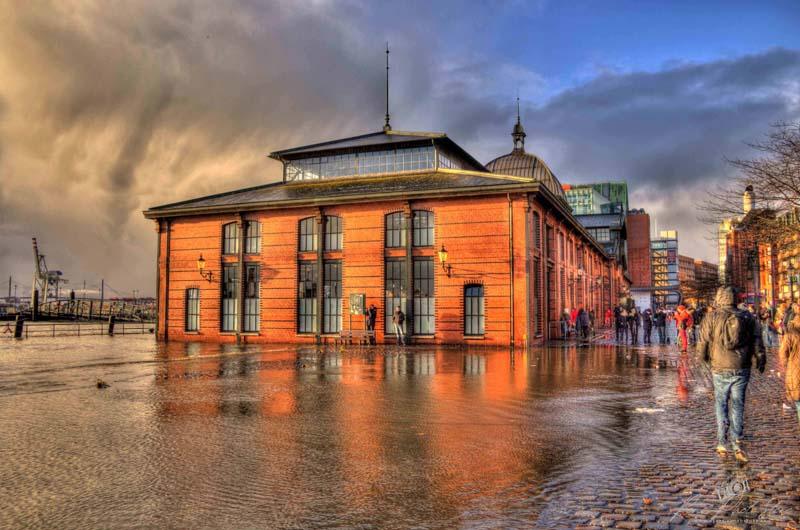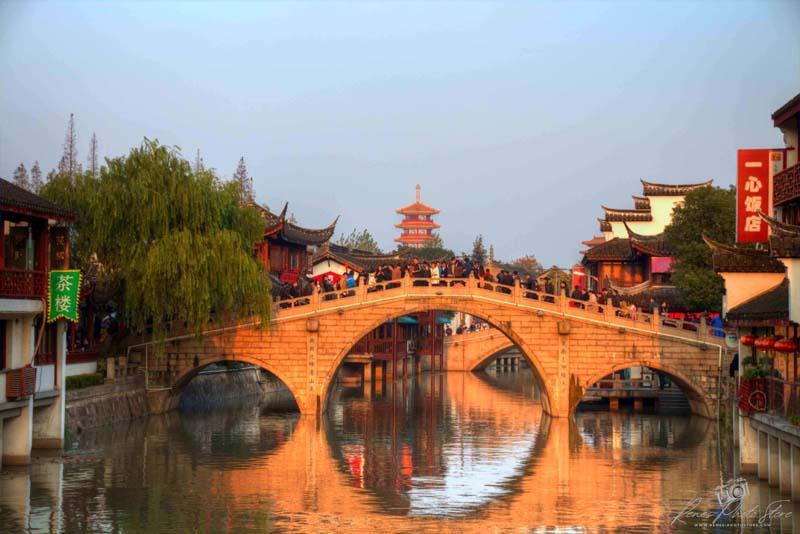The Hamburg Fish Market: Where History, Commerce, and the Elbe Collide
The Hamburg Fish Market, or Fischmarkt, is more than just a building; it is a living, breathing institution. It is a testament to the city’s unbreakable spirit, its historic reliance on the sea, and its ability to find joy and commerce regardless of the circumstances. While your striking photograph captures a moment of dramatic confrontation between the market and a flooding Elbe River, to understand this scene is to delve into centuries of history, where water is both the source of life and a formidable challenge.
A Market Born from Royal Decree
The story begins not with a market, but with a privilege. In 1703, the city’s fishermen were granted the exclusive right by royal decree to sell their catch on the Hamburg bank of the Elbe. This formalized a trade that had undoubtedly existed for much longer, creating a designated hub for the lifeblood of Hamburg’s economy: fish. For a powerful Hanseatic city whose wealth was built on trade routes across the water, securing a central, organized location for this trade was essential.
The original market was open-air, a bustling, muddy affair where the day’s catch was hauled directly from the boats and auctioned off to merchants and housewives alike. The character of the market was, and still is, defined by the people—the loud, quick-witted auctioneers known as Marktschreier (market shouters) who could sell anything with a torrent of humor and charm, and the tough, weather-beaten fishermen who braved the North Sea.
The Iconic Fish Auction Hall: A Symbol of Modernity
For nearly two centuries, the market operated without its most famous structure. The iconic Fish Auction Hall (Fischauktionshalle) that is the subject of your photo wasn’t built until 1896. Its construction was a statement of confidence and modernity. With its iron framework, large arched windows, and expansive hall, it was designed to accommodate the growing scale of the trade and to provide a more orderly and weather-protected environment for the auctions.
The architecture is a beautiful example of North German industrial brick construction, typical of the era. It was built to be functional, durable, and imposing—a temple to commerce that reflected Hamburg’s status. The hall was never just for fish; it was designed as a multi-purpose space, with areas for processing and auction, but also capable of hosting public events, a hint at the vibrant entertainment complex it would later become.
The Elbe River: Partner and Adversary
The relationship between Hamburg and the Elbe River is deeply symbiotic but never without tension. The river gave the city its life, its port, its trade, and its identity. But it also possesses a destructive power that every Hamburger respects. The location of the Fish Market, right on the river’s edge in the Altona district, is a deliberate choice that places it at the very heart of this relationship. It is the city’s front porch, facing the water that defines it.
Flooding is not an anomaly here; it is a periodic reality. The North Sea’s tidal surges, combined with weather patterns, regularly push water levels of the Elbe to critical points. The market building and its surrounding plaza have been flooded countless times throughout history. This is why the scene in your photograph is not just a picture of disaster, but one of a familiar dance. The building was constructed with this in mind. Its elevated foundations and robust brickwork are designed to withstand these aquatic intrusions. A flood here is not a defeat; it is a temporary state, a reminder of the power of nature that the city has learned to accommodate and resist.
The Fish Market Today: More Than Just Fish
While the early morning fish auction inside the hall (a tradition that continues from 5 am to 9:30 am every Sunday) remains the core of its identity, the modern Fischmarkt has evolved into a quintessential Hamburg experience. After the auctions, the hall transforms into a massive party venue, with live bands playing jazz, rock, and blues to a crowd of thousands enjoying fish sandwiches and beer—a ritual for locals and tourists alike that blurs the line between market and festival.
The surrounding open-air area swells with vendors selling not only fish but also fruits, vegetables, flowers, clothing, and bric-a-brac. The energy is chaotic, joyful, and utterly unique. It is a weekly carnival that embodies the St. Pauli district’s rebellious, lively spirit.
Your Photograph: Capturing a Moment of Resilience
Your image, showing the historic Fish Auction Hall during a flood, captures a powerful narrative. The water reflecting the imposing architecture creates a haunting beauty, but the true story is one of resilience. The building stands firm, unbroken, waiting for the waters to recede as they always have. It represents Hamburg itself: a city that has faced countless challenges, from great fires to wartime destruction to storm surges, and has always rebuilt, renewed, and carried on.
It speaks to a history of learning to live with the water, not just on it. The floodwaters lap at the foundations of a building that was made for this very purpose, to stand as a permanent marker of commerce and community against the temporary wrath of the river. This isn’t a scene of vulnerability; it is a display of enduring strength and a poignant reminder of the raw, natural forces that shaped this maritime city.
This moment of dramatic natural interplay, captured in this high-resolution photograph, is available as a digital download for your home or creative project. To own a piece of this enduring history and display its powerful story, simply follow this link: CLICK HERE!!!



